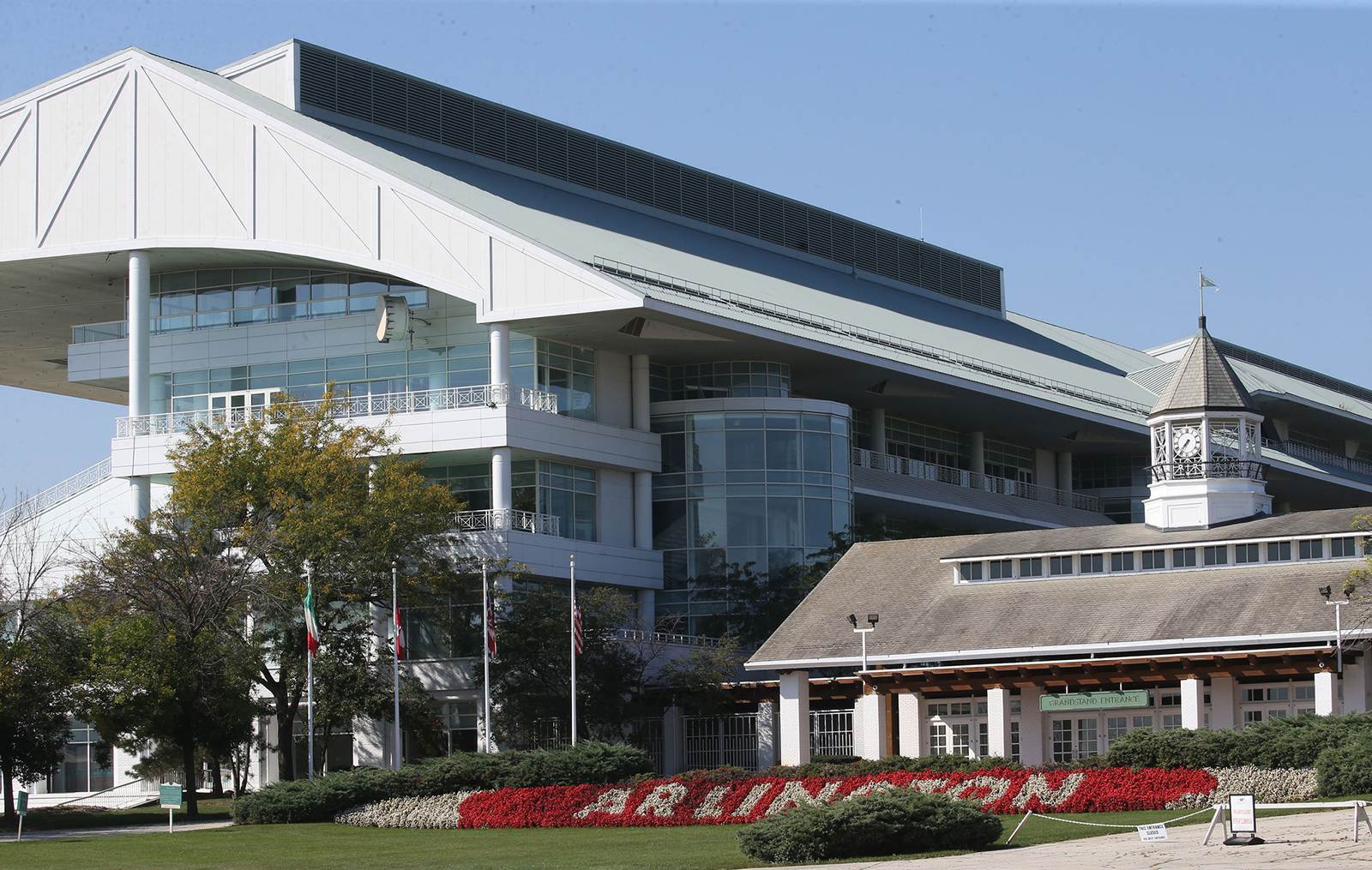With RSV and other respiratory illnesses surging in the Chicago area, sending many children to the hospital, what are the warning signs parents should watch for if their child becomes ill?
The earlier-than-normal rise in cases has put hospitals on high alert as beds rapidly fill with children.
"The region is facing a surge of pediatric respiratory cases, leaving health care facilities, including Advocate Children’s Hospital, on high alert," a spokesperson for Advocate Health Care said in a release. "Many sick children are presenting with bronchiolitis, a lower respiratory tract disease frequently caused by respiratory syncytial virus (RSV)."
In Cook County, experts reported a similar situation.
"We have seen a surge of RSV infections in children, requiring admission for some of those children, particularly younger kids, 6 months or less," said Dr. Rosibell Arcia-Diaz, a pediatrician with John H. Stroger Jr. Hospital of Cook County.
But at what point should parents seek medical care? Experts say there are some "red flags" to look for.
"Younger children with difficulty breathing, they should definitely be seen by their pediatrician. For older kids, also same. Any difficulty breathing, any decrease in their activity, any decrease on their oral intake," Arcia-Diaz said. "Same for younger kids. Kids can easily get dehydrated. So that's one of the red flags that we give to the parents. It's, you know, if your child's not eating enough, not drinking as usual - for example, baby's not taking their bottles like they used to - like all of those will be what we call red flags and parents should get attention if that's the case."
Local
The CDC states parents should contact their health care provider if their child "is having difficulty breathing, not drinking enough fluids, or experiencing worsening symptoms."
Anyone who may be questioning their child's health should contact their doctor, officials said.
Feeling out of the loop? We'll catch you up on the Chicago news you need to know. Sign up for the weekly Chicago Catch-Up newsletter.
Read More: What is RSV, and How Long Does it Last? Symptoms to Watch for as Virus Surges in Young Kids
According to the CDC, RSV results in around 58,000 annual hospitalizations and 100 to 300 deaths among children under 5 each year in the U.S.
Here's what else you should know:
What is RSV?
The Centers for Disease Control and Prevention defines respiratory syncytial virus, known as RSV, as a "common respiratory virus that usually causes mild, cold-like symptoms."
"Most people recover in a week or two, but RSV can be serious, especially for infants and older adults," the CDC states.
The virus is the most common cause of bronchiolitis and pneumonia in children under the age of 1 in the U.S., data shows.
In fact, the CDC reports "almost all children will have had an RSV infection by their second birthday."
What Are the Symptoms of RSV and How Soon Can They Appear?
According to the CDC, people infected with RSV usually show symptoms within four to six days after getting infected.
"After a couple of days [from exposure], you can start seeing some symptoms," Arcia-Diaz said. "Each child is really different, but yeah, after exposure, most viruses you tend to see symptoms like a couple of days after."
Those symptoms can include:
- Runny nose
- Decrease in appetite
- Coughing
- Sneezing
- Fever
- Wheezing
These symptoms usually appear in stages and not all at once, according to the CDC.
"RSV usually produces like difficulty breathing on some children, particularly those kids with the baseline issues," Arcia-Diaz said. "With asthma, those actually have more chances of being wheezing because of the RSV. So in some children, it will be more like just like a ear or eye infection, just runny nose, sneezing, but some other kids will have this difficulty breathing... younger kids, like I said, they will be more prone to have this difficulty with the breathing."
How Long Does It Last?
According to Arcia-Diaz, RSV infections typically last about seven to 10 days.
"RSV is usually like a self-limited disease," she said. "It's going to take about like seven to 10 days for the kid to fully recover. And we usually see a peak after a few days where kids can get worse. So sometimes they can start with like a very mild infection, day two or three they may get into that peak, and then maybe they may look sicker. And if that's the case, again, they should be seen by their pediatrician," she said.
Is It Treatable?
According to the CDC, most RSV infections go away on their own.
There is currently no specific treatment or vaccine for the virus, though the CDC reports researchers are working on developing some.
For those who do get hospitalized, Arcia-Diaz said they receive supportive measures like supplemental oxygen or IV fluids for dehydration and nebulization.
What Can Parents Do for a Child With RSV?
The CDC says parents can work to relieve symptoms by offering children over-the-counter fever or pain relievers like acetaminophen, making sure children are drinking plenty of water and communicating with healthcare providers about other medications that could help.
"For some of the kids, for example, if you see their intake decrease or they're not eating as much solid foods as they used to, [parents] can try, for example, Pedialyte... Just keep the kid hydrated, like really keep the kid hydrated, even if it's with fluids, liquids, whatever the kid is willing to take," Arcia-Diaz said. "That will be very important. Another thing will be controlled temperature. So if the kid is having fever, they can try to give... medication for fever. Those will be like two very easy to do like options for these kids."
When is RSV Season and What Makes This Surge Different?
Though RSV season typically begins between mid-September and mid-November, the virus' peak often does not hit until sometime between late-December and mid-February, data shows. This year, however, cases appear to rising much earlier.
"We have observed a rise in RSV in multiple U.S. regions, and some regions are nearing seasonal peak levels," a CDC spokesperson told NBC News.
Some experts say the COVID pandemic may have played a role in the earlier rise.
"One of the theories is like, you know, kids were previously at home, wearing masks, not really like necessarily being out and about, which we're seeing now more. So, you know, during the last two years when they were in their households, like they were not really getting exposed to viruses," Arcia-Diaz said. "So some, you know, kids create immunity as they get these infections, and RSV, an infection that they usually get like early on in life, if those kids were not exposed to RSV earlier because they were wearing masks or they were not attending school, etc., then now they're at risk of getting the infection."
"We're seeing our pediatric hospitals being quite full with kids getting admitted with RSV and, you know, other kinds of childhood viruses because for a couple of years, while people were masking and hand washing and being very careful because of COVID, we saw a lull in those other respiratory viruses," Chicago Department of Public Health Commissioner Dr. Allison Arwady said. "I very much think that lull is over."
In fact, the current surge has been ramping up for several weeks.
In September, NBC Chicago reported hospitals were on alert for a rise in respiratory viruses in children.
"We're definitely seeing an earlier rise in numbers of respiratory illnesses. Typically, this respiratory illness surge in kids actually comes, you know, mid-fall to late-fall and in the winter, so the fact that it's not even fall and there's already a rise is different from the norm," Dr. Silvia Ardila, a pediatric ICU physician at Cook County Health, said at the time.
Illinois isn't alone in seeing such an early surge in cases.
NBC News recently interviewed doctors from across five states — California, Illinois, Massachusetts, North Carolina and Rhode Island — all of whom reported pediatric hospital bed capacity strained due to an influx of RSV patients.
"We’re really having a capacity problem like I’ve never seen before," Dr. Charlotte Boney, pediatrician-in-chief at Baystate Children’s Hospital in Springfield, Massachusetts, told NBC News.
In the Chicago area, experts report the surge appears slightly different from previous years in the age range for children being affected.
"In the past, we tend to see mostly the little kids, like I mentioned before, the 6 months or below or kids that have like baseline issues like asthma or any other, you know, history of prematurity, for example... Now we're seeing a couple of like, older kids, like, you know, 2-, 3-year-olds that are getting admitted as well, requiring a little bit more of support and not being able to really treat the infection just at home," Arcia-Diaz said.
Can Adults Get RSV?
According to the Mayo Clinic, RSV can also infect adults, but symptoms in adults or older, healthy children are typically mild, often mimicking a common cold.
What Other Viruses Are Circulating?
While other respiratory viruses are also circulating among children, Chicago-area doctors say the numbers are much lower than those for RSV.
"We were seeing other viruses but, you know, not really at the same degree as RSV," Arcia-Diaz said, adding that Stroger Hospital has also seen some cases of rhinovirus and influenza as well, but "the numbers are not comparable" to RSV.
She noted, however, that in many cases, children are experiencing infections from multiple viruses.
"Another thing that we're seeing is, for example, kids are getting like one infection then a few days later, they get another and then parents are really concerned because it seems like it's like a never ending story," Arcia-Diaz said. "Particularly I see this in the clinic with kids that go to daycare, for example, and then they may be having a fever from this, you know, virus and then two days later, you know, three days later, after they're much better then they start having another virus."
The surge comes ahead of what health experts believe will be a particularly difficult flu season, and amid fears of a potential winter surge in COVID.
What Preventative Measures Can You Take?
These are some preventative measures the CDC says you can take:
- Cover your coughs and sneezes with a tissue or your upper shirt sleeve, not your hands
- Wash your hands often with soap and water for at least 20 seconds
- Avoid close contact, such as kissing, shaking hands, and sharing cups and eating utensils, with others
- Clean frequently touched surfaces such as doorknobs and mobile devices



